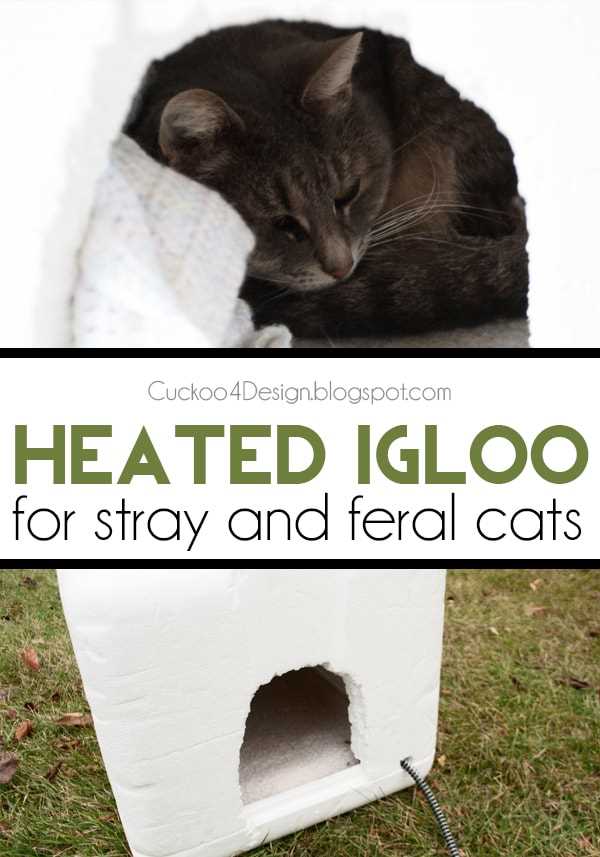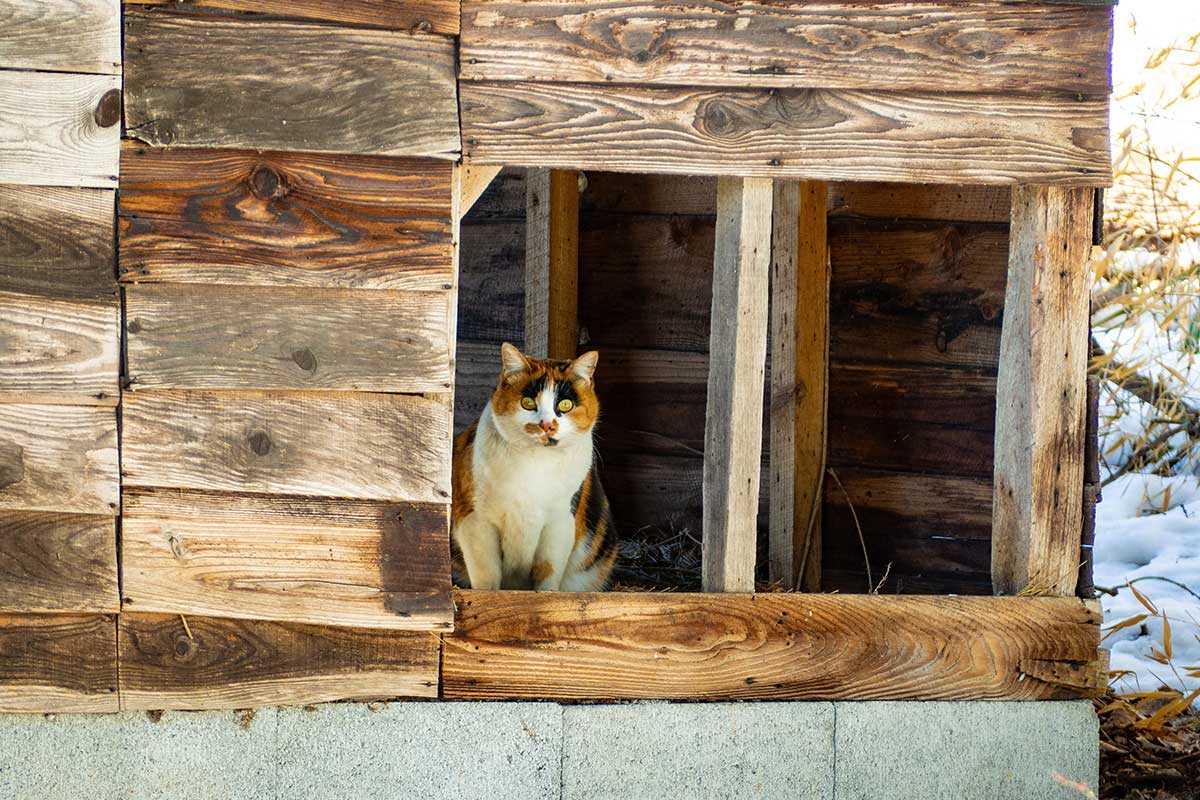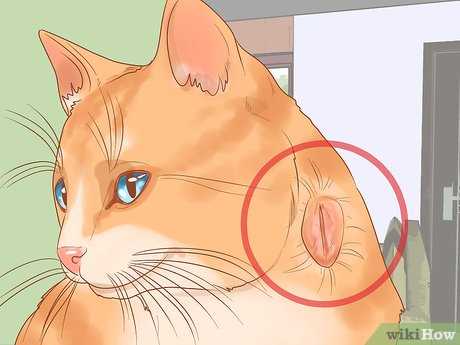



Make use of blankets and cozy spots, ideally near a sunny window or a warm corner of the room. Soft materials like fleece or wool offer great insulation. I love curling up in my favorite blanket, it traps body heat effectively and creates a snug environment.
Consider adding heated pads that don’t rely on power. They retain warmth from body heat and can be placed in my sleeping area. Alternatively, a hot water bottle wrapped in a towel works wonders. Just make sure it’s not too hot to avoid burns!
Creating a windbreak also helps. Positioning a cat tree or other furniture next to a wall can shield from drafts. I often find myself lounging on my cat tree, feeling safe and comfortable away from chilly breezes.
Encouraging snuggles with a buddy is another way to stay warm. When I cuddle with my fellow feline friends, we share body heat, which makes a cozy difference. Plus, it’s always nice to have company!
Lastly, keep an eye on food intake. A bit extra during colder months can provide the energy needed to maintain warmth. I always appreciate a few extra treats when it’s chilly outside!
Tips for Keeping Your Feline Friend Cozy
Insulating spaces is a practical approach. Use blankets or old towels to create a snug area for lounging. Cats love to burrow, so a pile of soft materials will be inviting.
Consider placing a cat bed in a sheltered spot, such as a corner or near a wall. This will help trap body heat while providing a sense of security. Use a box or a pet carrier lined with soft fabric to create a makeshift den.
- Ensure that bedding is clean and dry to maximize warmth.
- Use heat-reflective materials, like aluminum foil, to line surfaces where your pet sleeps.
Provide access to sunlight by positioning the resting area near windows during the day. Cats naturally seek warmth from the sun, and this can help maintain their comfort.
Encourage movement through play. Engaging in interactive activities keeps your furry companion active, which generates body heat. Toys that stimulate hunting instincts can be quite effective.
In colder months, consider clothing designed for pets. A snug sweater can add an extra layer of insulation. Ensure it fits well and allows for movement.
For those particularly chilly nights, creating a heated pad with a rice bag can offer additional warmth. Simply heat the bag and wrap it in a towel for a cozy spot. Just be cautious to avoid overheating.
Check on litter boxes frequently. A clean space is crucial to avoid unpleasant odors. For tips on maintaining freshness, refer to this guide on how to reduce ammonia smell in cat urine.
Creating Cozy Spaces with Natural Materials

For a snug retreat, consider using straw bales or hay. These materials provide excellent insulation and create a natural barrier against cold surfaces. Arrange them in a sheltered area, perhaps with a soft blanket on top for added comfort.
Using Wood and Fabric

Wooden crates or pallets can be transformed into delightful napping spots. Line them with thick, natural fabrics like wool or cotton. These textiles breathe well and offer warmth, making them perfect for curling up.
Incorporating Cardboard
Cardboard boxes are a fantastic choice for creating hideaways. They trap heat effectively and can be easily customized. Add a layer of fleece or an old sweater inside to enhance coziness. Cut openings for easy access and ventilation.
Utilizing Heat Retention Techniques for Cat Beds

One of my favorite ways to stay toasty is by creating a snug bed that captures and holds body heat. Start with materials like fleece or wool, as they do a fantastic job at insulating. Layering these fabrics not only boosts warmth but also adds a soft, inviting texture.
Insulated Bases
Consider using a thick, insulated base for the bed. A piece of foam or even an old blanket can trap heat from beneath. Place it on a surface that doesn’t conduct cold, like carpet or wood, which helps maintain a cozy environment. This simple change can make a significant difference!
Reflective Materials

Adding reflective materials, such as Mylar blankets, inside the bed can enhance heat retention. These shiny sheets bounce warmth back, creating a snug cocoon. Just make sure to cover any sharp edges to keep things safe and comfortable.
Finally, don’t underestimate the power of positioning! Place the bed in a sunny spot during the day to soak up warmth from natural sunlight. With these techniques, my resting space remains inviting and snug, no matter how chilly it gets outside!
FAQ:
What are some natural ways to keep my cat warm during winter?
There are several natural methods to ensure your cat stays warm without relying on electricity. First, consider creating a cozy bed using blankets or towels. Placing the bed in a draft-free area can help maintain warmth. You can also use heated water bottles wrapped in fabric, which provide gentle warmth. Additionally, allowing your cat to snuggle with you can provide both warmth and comfort. Providing plenty of bedding materials, such as fleece or straw, can also help insulate their sleeping area.
How can I keep my outdoor cat warm without electricity?
For outdoor cats, building a sheltered space is important. You can create an insulated cat house using wooden pallets or plastic containers, ensuring it’s raised off the ground to prevent moisture. Fill the interior with straw or hay for insulation. It’s also beneficial to provide a warm blanket or old clothes that your cat can snuggle into. Ensure that the entrance is small to minimize wind exposure. Regularly check the shelter to make sure it remains dry and clean.
Can I use my cat’s natural instincts to help keep them warm?
Yes, you can take advantage of your cat’s instincts. Cats naturally seek out warm places, so allowing them to find their preferred cozy spot can help. You can encourage this behavior by providing multiple warm areas around your home, such as boxes or enclosed spaces. Cats may also enjoy being up high, so consider providing shelves or perches near a sunny window for warmth during the day. Their instinct to curl up into a ball can also help retain body heat.
Are there specific materials I should use for bedding to keep my cat warm?
For bedding, materials that provide insulation and warmth are ideal. Fleece blankets are soft and retain heat well. Straw is also a great option for outdoor shelters, as it does not retain moisture and offers excellent insulation. Old sweaters or jackets can be repurposed for indoor bedding, as they provide warmth and a sense of security. Avoid using cotton, as it can absorb moisture and become cold.
What signs should I look for to know if my cat is too cold?
Signs that your cat may be too cold include excessive shivering, seeking out warm places, and reluctance to move. If your cat is huddled up or has its tail tucked in, these can also be indications of discomfort from the cold. Additionally, pay attention to changes in their behavior, such as increased vocalization or meowing, which may signal distress. If you notice these signs, it’s important to take action to warm them up and provide a comfortable environment.
Make use of blankets and cozy spots, ideally near a sunny window or a warm corner of the room. Soft materials like fleece or wool offer great insulation. I love curling up in my favorite blanket, it traps body heat effectively and creates a snug environment.
Consider adding heated pads that don’t rely on power. They retain warmth from body heat and can be placed in my sleeping area. Alternatively, a hot water bottle wrapped in a towel works wonders. Just make sure it’s not too hot to avoid burns!
Creating a windbreak also helps. Positioning a cat tree or other furniture next to a wall can shield from drafts. I often find myself lounging on my cat tree, feeling safe and comfortable away from chilly breezes.
Encouraging snuggles with a buddy is another way to stay warm. When I cuddle with my fellow feline friends, we share body heat, which makes a cozy difference. Plus, it’s always nice to have company!
Lastly, keep an eye on food intake. A bit extra during colder months can provide the energy needed to maintain warmth. I always appreciate a few extra treats when it’s chilly outside!
Tips for Keeping Your Feline Friend Cozy
Insulating spaces is a practical approach. Use blankets or old towels to create a snug area for lounging. Cats love to burrow, so a pile of soft materials will be inviting.
Consider placing a cat bed in a sheltered spot, such as a corner or near a wall. This will help trap body heat while providing a sense of security. Use a box or a pet carrier lined with soft fabric to create a makeshift den.
- Ensure that bedding is clean and dry to maximize warmth.
- Use heat-reflective materials, like aluminum foil, to line surfaces where your pet sleeps.
Provide access to sunlight by positioning the resting area near windows during the day. Cats naturally seek warmth from the sun, and this can help maintain their comfort.
Encourage movement through play. Engaging in interactive activities keeps your furry companion active, which generates body heat. Toys that stimulate hunting instincts can be quite effective.
In colder months, consider clothing designed for pets. A snug sweater can add an extra layer of insulation. Ensure it fits well and allows for movement.
For those particularly chilly nights, creating a heated pad with a rice bag can offer additional warmth. Simply heat the bag and wrap it in a towel for a cozy spot. Just be cautious to avoid overheating.
Check on litter boxes frequently. A clean space is crucial to avoid unpleasant odors. For tips on maintaining freshness, refer to this guide on how to reduce ammonia smell in cat urine.
Creating Cozy Spaces with Natural Materials

For a snug retreat, consider using straw bales or hay. These materials provide excellent insulation and create a natural barrier against cold surfaces. Arrange them in a sheltered area, perhaps with a soft blanket on top for added comfort.
Using Wood and Fabric

Wooden crates or pallets can be transformed into delightful napping spots. Line them with thick, natural fabrics like wool or cotton. These textiles breathe well and offer warmth, making them perfect for curling up.
Incorporating Cardboard
Cardboard boxes are a fantastic choice for creating hideaways. They trap heat effectively and can be easily customized. Add a layer of fleece or an old sweater inside to enhance coziness. Cut openings for easy access and ventilation.
Utilizing Heat Retention Techniques for Cat Beds

One of my favorite ways to stay toasty is by creating a snug bed that captures and holds body heat. Start with materials like fleece or wool, as they do a fantastic job at insulating. Layering these fabrics not only boosts warmth but also adds a soft, inviting texture.
Insulated Bases
Consider using a thick, insulated base for the bed. A piece of foam or even an old blanket can trap heat from beneath. Place it on a surface that doesn’t conduct cold, like carpet or wood, which helps maintain a cozy environment. This simple change can make a significant difference!
Reflective Materials

Adding reflective materials, such as Mylar blankets, inside the bed can enhance heat retention. These shiny sheets bounce warmth back, creating a snug cocoon. Just make sure to cover any sharp edges to keep things safe and comfortable.
Finally, don’t underestimate the power of positioning! Place the bed in a sunny spot during the day to soak up warmth from natural sunlight. With these techniques, my resting space remains inviting and snug, no matter how chilly it gets outside!
FAQ:
What are some natural ways to keep my cat warm during winter?
There are several natural methods to ensure your cat stays warm without relying on electricity. First, consider creating a cozy bed using blankets or towels. Placing the bed in a draft-free area can help maintain warmth. You can also use heated water bottles wrapped in fabric, which provide gentle warmth. Additionally, allowing your cat to snuggle with you can provide both warmth and comfort. Providing plenty of bedding materials, such as fleece or straw, can also help insulate their sleeping area.
How can I keep my outdoor cat warm without electricity?
For outdoor cats, building a sheltered space is important. You can create an insulated cat house using wooden pallets or plastic containers, ensuring it’s raised off the ground to prevent moisture. Fill the interior with straw or hay for insulation. It’s also beneficial to provide a warm blanket or old clothes that your cat can snuggle into. Ensure that the entrance is small to minimize wind exposure. Regularly check the shelter to make sure it remains dry and clean.
Can I use my cat’s natural instincts to help keep them warm?
Yes, you can take advantage of your cat’s instincts. Cats naturally seek out warm places, so allowing them to find their preferred cozy spot can help. You can encourage this behavior by providing multiple warm areas around your home, such as boxes or enclosed spaces. Cats may also enjoy being up high, so consider providing shelves or perches near a sunny window for warmth during the day. Their instinct to curl up into a ball can also help retain body heat.
Are there specific materials I should use for bedding to keep my cat warm?
For bedding, materials that provide insulation and warmth are ideal. Fleece blankets are soft and retain heat well. Straw is also a great option for outdoor shelters, as it does not retain moisture and offers excellent insulation. Old sweaters or jackets can be repurposed for indoor bedding, as they provide warmth and a sense of security. Avoid using cotton, as it can absorb moisture and become cold.
What signs should I look for to know if my cat is too cold?
Signs that your cat may be too cold include excessive shivering, seeking out warm places, and reluctance to move. If your cat is huddled up or has its tail tucked in, these can also be indications of discomfort from the cold. Additionally, pay attention to changes in their behavior, such as increased vocalization or meowing, which may signal distress. If you notice these signs, it’s important to take action to warm them up and provide a comfortable environment.
Make use of blankets and cozy spots, ideally near a sunny window or a warm corner of the room. Soft materials like fleece or wool offer great insulation. I love curling up in my favorite blanket, it traps body heat effectively and creates a snug environment.
Consider adding heated pads that don’t rely on power. They retain warmth from body heat and can be placed in my sleeping area. Alternatively, a hot water bottle wrapped in a towel works wonders. Just make sure it’s not too hot to avoid burns!
Creating a windbreak also helps. Positioning a cat tree or other furniture next to a wall can shield from drafts. I often find myself lounging on my cat tree, feeling safe and comfortable away from chilly breezes.
Encouraging snuggles with a buddy is another way to stay warm. When I cuddle with my fellow feline friends, we share body heat, which makes a cozy difference. Plus, it’s always nice to have company!
Lastly, keep an eye on food intake. A bit extra during colder months can provide the energy needed to maintain warmth. I always appreciate a few extra treats when it’s chilly outside!
Tips for Keeping Your Feline Friend Cozy
Insulating spaces is a practical approach. Use blankets or old towels to create a snug area for lounging. Cats love to burrow, so a pile of soft materials will be inviting.
Consider placing a cat bed in a sheltered spot, such as a corner or near a wall. This will help trap body heat while providing a sense of security. Use a box or a pet carrier lined with soft fabric to create a makeshift den.
- Ensure that bedding is clean and dry to maximize warmth.
- Use heat-reflective materials, like aluminum foil, to line surfaces where your pet sleeps.
Provide access to sunlight by positioning the resting area near windows during the day. Cats naturally seek warmth from the sun, and this can help maintain their comfort.
Encourage movement through play. Engaging in interactive activities keeps your furry companion active, which generates body heat. Toys that stimulate hunting instincts can be quite effective.
In colder months, consider clothing designed for pets. A snug sweater can add an extra layer of insulation. Ensure it fits well and allows for movement.
For those particularly chilly nights, creating a heated pad with a rice bag can offer additional warmth. Simply heat the bag and wrap it in a towel for a cozy spot. Just be cautious to avoid overheating.
Check on litter boxes frequently. A clean space is crucial to avoid unpleasant odors. For tips on maintaining freshness, refer to this guide on how to reduce ammonia smell in cat urine.
Creating Cozy Spaces with Natural Materials

For a snug retreat, consider using straw bales or hay. These materials provide excellent insulation and create a natural barrier against cold surfaces. Arrange them in a sheltered area, perhaps with a soft blanket on top for added comfort.
Using Wood and Fabric

Wooden crates or pallets can be transformed into delightful napping spots. Line them with thick, natural fabrics like wool or cotton. These textiles breathe well and offer warmth, making them perfect for curling up.
Incorporating Cardboard
Cardboard boxes are a fantastic choice for creating hideaways. They trap heat effectively and can be easily customized. Add a layer of fleece or an old sweater inside to enhance coziness. Cut openings for easy access and ventilation.
Utilizing Heat Retention Techniques for Cat Beds

One of my favorite ways to stay toasty is by creating a snug bed that captures and holds body heat. Start with materials like fleece or wool, as they do a fantastic job at insulating. Layering these fabrics not only boosts warmth but also adds a soft, inviting texture.
Insulated Bases
Consider using a thick, insulated base for the bed. A piece of foam or even an old blanket can trap heat from beneath. Place it on a surface that doesn’t conduct cold, like carpet or wood, which helps maintain a cozy environment. This simple change can make a significant difference!
Reflective Materials

Adding reflective materials, such as Mylar blankets, inside the bed can enhance heat retention. These shiny sheets bounce warmth back, creating a snug cocoon. Just make sure to cover any sharp edges to keep things safe and comfortable.
Finally, don’t underestimate the power of positioning! Place the bed in a sunny spot during the day to soak up warmth from natural sunlight. With these techniques, my resting space remains inviting and snug, no matter how chilly it gets outside!
FAQ:
What are some natural ways to keep my cat warm during winter?
There are several natural methods to ensure your cat stays warm without relying on electricity. First, consider creating a cozy bed using blankets or towels. Placing the bed in a draft-free area can help maintain warmth. You can also use heated water bottles wrapped in fabric, which provide gentle warmth. Additionally, allowing your cat to snuggle with you can provide both warmth and comfort. Providing plenty of bedding materials, such as fleece or straw, can also help insulate their sleeping area.
How can I keep my outdoor cat warm without electricity?
For outdoor cats, building a sheltered space is important. You can create an insulated cat house using wooden pallets or plastic containers, ensuring it’s raised off the ground to prevent moisture. Fill the interior with straw or hay for insulation. It’s also beneficial to provide a warm blanket or old clothes that your cat can snuggle into. Ensure that the entrance is small to minimize wind exposure. Regularly check the shelter to make sure it remains dry and clean.
Can I use my cat’s natural instincts to help keep them warm?
Yes, you can take advantage of your cat’s instincts. Cats naturally seek out warm places, so allowing them to find their preferred cozy spot can help. You can encourage this behavior by providing multiple warm areas around your home, such as boxes or enclosed spaces. Cats may also enjoy being up high, so consider providing shelves or perches near a sunny window for warmth during the day. Their instinct to curl up into a ball can also help retain body heat.
Are there specific materials I should use for bedding to keep my cat warm?
For bedding, materials that provide insulation and warmth are ideal. Fleece blankets are soft and retain heat well. Straw is also a great option for outdoor shelters, as it does not retain moisture and offers excellent insulation. Old sweaters or jackets can be repurposed for indoor bedding, as they provide warmth and a sense of security. Avoid using cotton, as it can absorb moisture and become cold.
What signs should I look for to know if my cat is too cold?
Signs that your cat may be too cold include excessive shivering, seeking out warm places, and reluctance to move. If your cat is huddled up or has its tail tucked in, these can also be indications of discomfort from the cold. Additionally, pay attention to changes in their behavior, such as increased vocalization or meowing, which may signal distress. If you notice these signs, it’s important to take action to warm them up and provide a comfortable environment.










